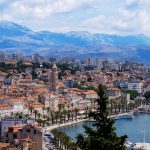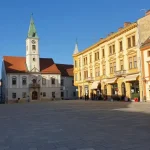The north-south divide is a common situation in many European countries. The United Kingdom is one notable example, in which the south absorbs an enormous amount of money as the north tends to get mere scraps. This is more or less down to the fact that London is situated in the south of the country, but what then, with its capital in the north, is Croatia’s excuse? Tourism and the sea are safe bets… A look at Croatian property prices reveals some shocking statistics.
As Novac writes on the 11th of January, 2020, the dramatic difference between the north and the south of Croatia is reflected in the prices of family homes, according to the latest analysis of the Ministry of Construction and the Institute of Economics in Zagreb – “Croatian Real Estate Market Review 2018”, which delves deep into the Croatian property market and the huge differences between north and south.
These are real transaction prices, so this analysis most certainly shows the real state of the estate market and Croatian property prices. In the continental town of Bjelovar, the lowest median price per square metre in a house was a mere 36 kuna. After that come Koprivnica (54 kuna), Virovitica (62 kuna) and homes in Požega-Slavonia County (86 kuna).
The most expensive square metre in a house at the median price was in Split-Dalmatia County (4,354 kuna), Primorje-Gorski kotar County (4,334 kuna) and Šibenik-Knin County (4,228 kuna). According to the analysis, it would mean that for the price of one 100-square-metre house in Split, one hundred houses of the same size can be bought in, for example, Bjelovar. An enormous, hardly comprehensible difference within one small country.
Could this really be so? This incredible difference in Croatian property prices seems truly remarkable, so Novac asked one of the authors of the analysis, Maruška Vizek, a scientist from the Institute of Economics. She explained that the data does indicate massive regional differences in Croatian property prices, but they can be even further magnified if the data from eNekretnine, the system from which they collected the sales contracts, isn’t evaluated.
”In other words, it’s possible that intentionally lower prices than market prices are put into purchase contracts to reduce the amount of property sales tax, and then we see even greater price differences between regions,” she explained.
Concerning apartments, the same analysis states that back in 2018, 23,736 apartments and flats with a total value of 13.2 billion kuna were sold. Taking first place with a median price of an apartment/flat of 12,158 kuna per square metre is, rather unsurprisingly, Dubrovnik-Neretva County, followed by Split-Dalmatia County with the price of 11,669 kuna and then the City of Zagreb with the price of 9,459 kuna.
Median apartment/flat prices in other counties ranged from 2,967 kuna per square metre in Vukovar-Srijem County to 5,840 kuna in Osijek-Baranja County. This would mean that for one square metre in an apartment/flat in Dubrovnik-Neretva County, you could purchase 4.1 square metres in Vukovar-Srijem County, since the difference in the median price per square metre between the two counties is as high as 9.191 kuna.
Make sure to follow our dedicated lifestyle page for more on Croatian property prices.










